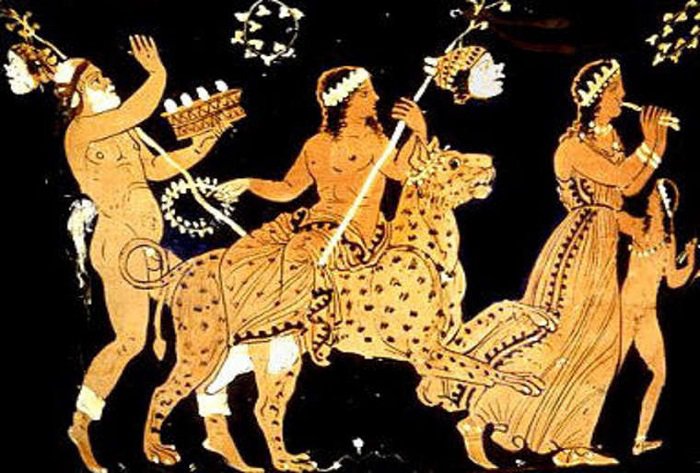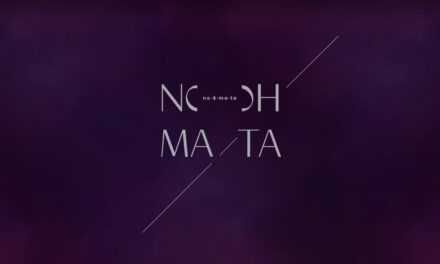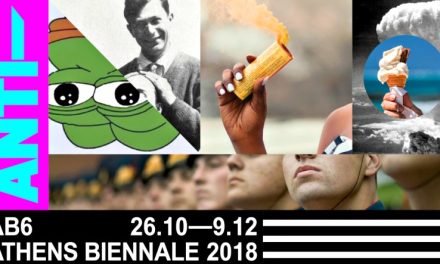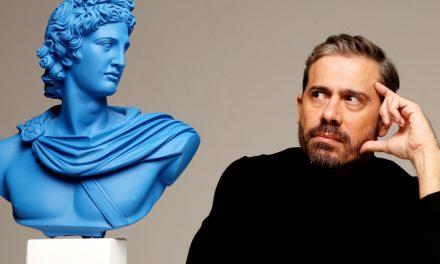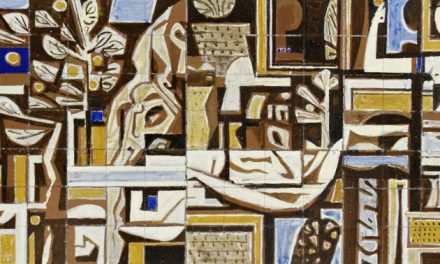The ‘Triodion’ period preceding Lent and Orthodox Easter has begun, and with it come fun and joy! Carnival season in Greece (Apokries) lasts three weeks and is marked by celebrations throughout the land, with music, dancing, masquerades and all sorts of pranks. During carnival season, people of all ages dress up and enjoy the freedom of anonymity offered by costumes and masks, leaving troubles behind for a while.
Carnival has its roots in ancient ceremonies meant to help the earth put forth shoots, which took the form of leaping dances and various kinds of folk mummery and disguise, in order to propitiate harmful spirits. Over centuries of time, some ancient ceremonies have embedded into Christian practices and beliefs and taken on a different meaning. In ancient Greece, the festival in honour of Dionysus took place in early spring, as Dionysus symbolised life’s rebirth after winter. Nowadays, carnival season is held in the same period but not on a fixed date, as it depends on the moveable Easter feast date.
During the second week of Apokries, known as ‘Kreatini’ (Meat Week), meat may be eaten every day, even during the traditional fasting days of Wednesday and Friday. The Thursday of the second week of carnival is known as “Tsiknopempti” (Smoke Thursday). Traditionally, everyone cooks meat so that the smoke or “tsikna” fills the air.
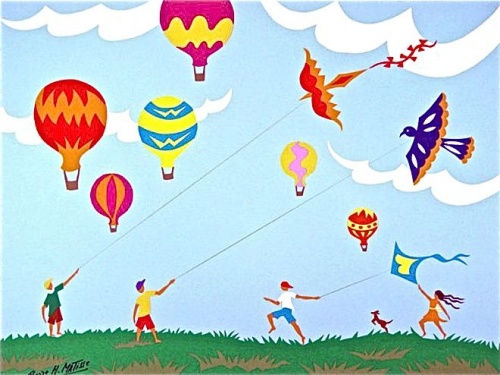
Celebrations culminate in the last week, known as ‘Tyrini’ (Cheese Week), and particularly the last weekend with Clean or Ash Monday (Kathara Deftera) marking the beginning of the eastern Orthodox Lent period. Clean Monday is a public holiday in Greece and is marked by feasts (‘koulouma’) and the widespread tradition of flying of kites throughout the country.
Today, there are many different carnival feasts and parades around Greece. Hundreds of groups take part in those parades, and anyone who wishes to participate can just join a group.
- Patras Carnival: The King of Festivals
The Carnival of Patras is the largest event of its kind in Greece and one of the biggest in Europe. This carnival is purely of Italian origin and is completely unrelated to the carnival customs of the rest of the country. Dance shows, carnival parades, the game of the Hidden Treasure, the Children’s Carnival, concerts and traditional events create a unique carnival ambience. Celebrations culminate with the Night parade – the so-called “nyhterini podarati” – when thousands of participants, organized in groups, dance holding torches, the Grand Parade (Sunday, March 13) and the spectacular Closing Ceremony at St. Nicolas pier, where the Carnival King is set on fire.
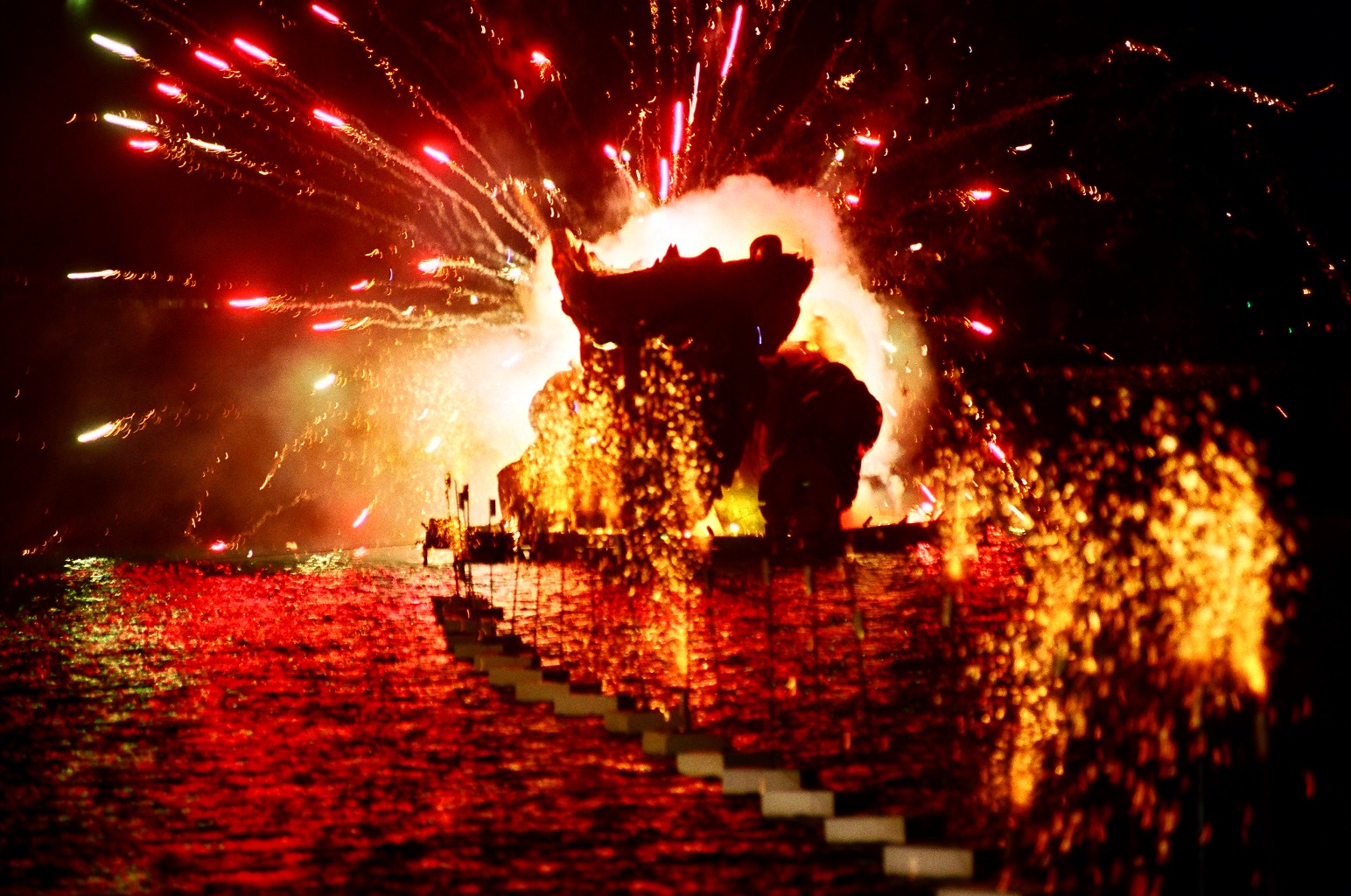
- The Thracian Folk Carnival of Xanthi
Xanthi’s Carnival is the biggest festival of Northern Greece, with events showcasing the history, folklore and culture of the region. The carnival’s peak is the great Carnival Parade, followed by the custom of the “Burning of the Tzar”. The Tzar represents the Carnival King who is burnt in a big fire by the river Kosynthos at the entrance of Xanthi’s Old Town. An impressive fireworks show complements the closing ceremony, while children compete to grab a piece of the kris pudding with their mouths (their hands are tied behind their backs) before joining the celebrations.
- The customs of ‘Yeros’ and ‘Korela’ in Skyros
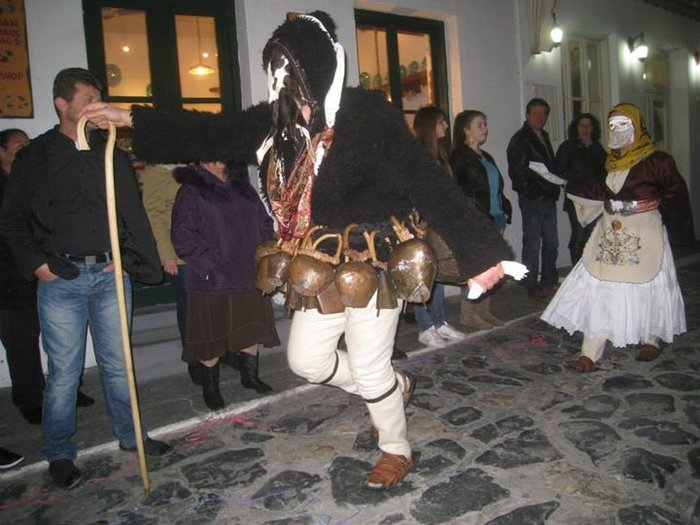
During the carnival, the island’s customs requires the “Yeros” (old man) and the “Korela” (young girl) to go out in the streets and add their own special touch to the occasion. The “old man” wears a thick black cloak, with two or three rows of bells tied around his waist. His face is covered with a small goat’s fleece. The “Korela”, the old man’s partner, is dressed in the traditional white costume of Skyros. She dances round the old man, opening the way for him. Many times, a third figure, the “Frank”, accompanies the couple. Clean Monday sees another Skyros carnival tradition, the ‘trata’, with the island’s fishermen narrating tales in a lovely rhyming fashion.
- ‘Genitsaroi and Boules’ in Naoussa and ‘Ragoutsaria’ in Kastoria
The custom of “Giannitsaroi and Boules” is the most renowned happening in Naoussa. Participants include exclusively unmarried men who dress-up as ‘Genitsaroi’. ‘Boula’, the bride, is also performed by a man. Children, together with musicians playing traditional instruments, also take part in the event.
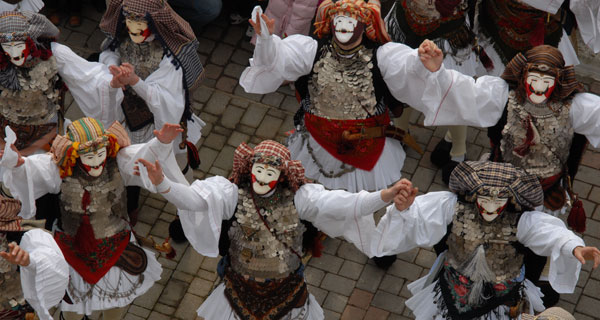
“Ragoutsaria”, as the Carnival of Kastoria is called, refers to the revival of the ancient Dionysian ceremonies and aims to help the locals forget the troubles of the year. Beyond its symbolic interpretations, Ragoutsaria give the city’s festivities a playful touch, attracting visitors from all over Greece.
- Rethymno: Carnival festivities meet Venetian tradition
With its slogan “Live, Act, Create!” the Carnival of Rethymno invites visitors to participate in the festivities which include parties, the Dance of Teams, a Treasure Hunt and old Greek kantades (serenades). Celebrations culminate with the Grand Parade that has a strong Venetian influence. On Clean Monday, long standing customs come alive: “Moutzoúroma” (daubing) in the villages of Arméni, Geráni and Rousospíti, “Klépsimo tis Nýfis” (the stealing of the Bride), “Avgomázema” (egg collecting) and “Kantí” in the village of Melidóni. Worth visiting also is the village of Méronas, where a variety of customs are re-enacted, such as “Lerades”, the “Arkoúda” (bear), the “Hódja”(Turkish cleric), the ”Tsangáris” (cobbler), the “Proxenió” (match-making) and the “Kamíla” (camel).
- ‘Petegoletsia’ in Corfu and ‘Gkiostres’ in Zakynthos
The famous Carnival of Corfu is 450 years old and has its roots in the Middle Ages, when the Venetian conquerors of the island brought this custom back from their homeland. An interesting custom is the enactment of the Corfu Petegoletsia, which means “the Gossip”. It is a form of a street theater, where actors sit by windows overlooking the alley of the Old Town and exchange gossip in local dialect.
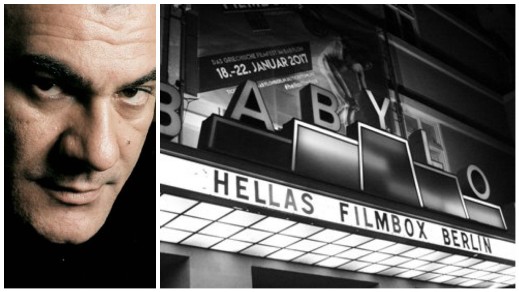
A noteworthy event during the Zakynthos Carnival is the famous “Gkiostres”, where islanders undertake horse racing in accordance with the old tradition of knightly competitions. The events close with the very entertaining “Funeral Mask”, a mock funeral with carnival goers take the position of the deceased, followed by grieving relatives.
The Tyrnavos Carnival is considered the biggest carnival in Central Greece, and what makes it famous is the “Bourani”, a celebration of the phallus, symbolizing reproduction. During the celebration, men hold in their hands phalluses as scepters, made of wood or clay.
During the last weekend of the carnival the legend of the Ghost is reenacted in Amfissa, a part of Greece where legends about ghosts are very common. From the quarter of Harmaina, the “ghost” descends along with hundreds of other disguised people to mark the festivities of the area. On the last Sunday of the Carnival, an event called the “maypole” (Gaitanaki) is organized in Livadia. The neighbouring districts of the city each prepare their maypole along with floats and masquerades and parade towards the central square where they join their maypoles and dance around them.
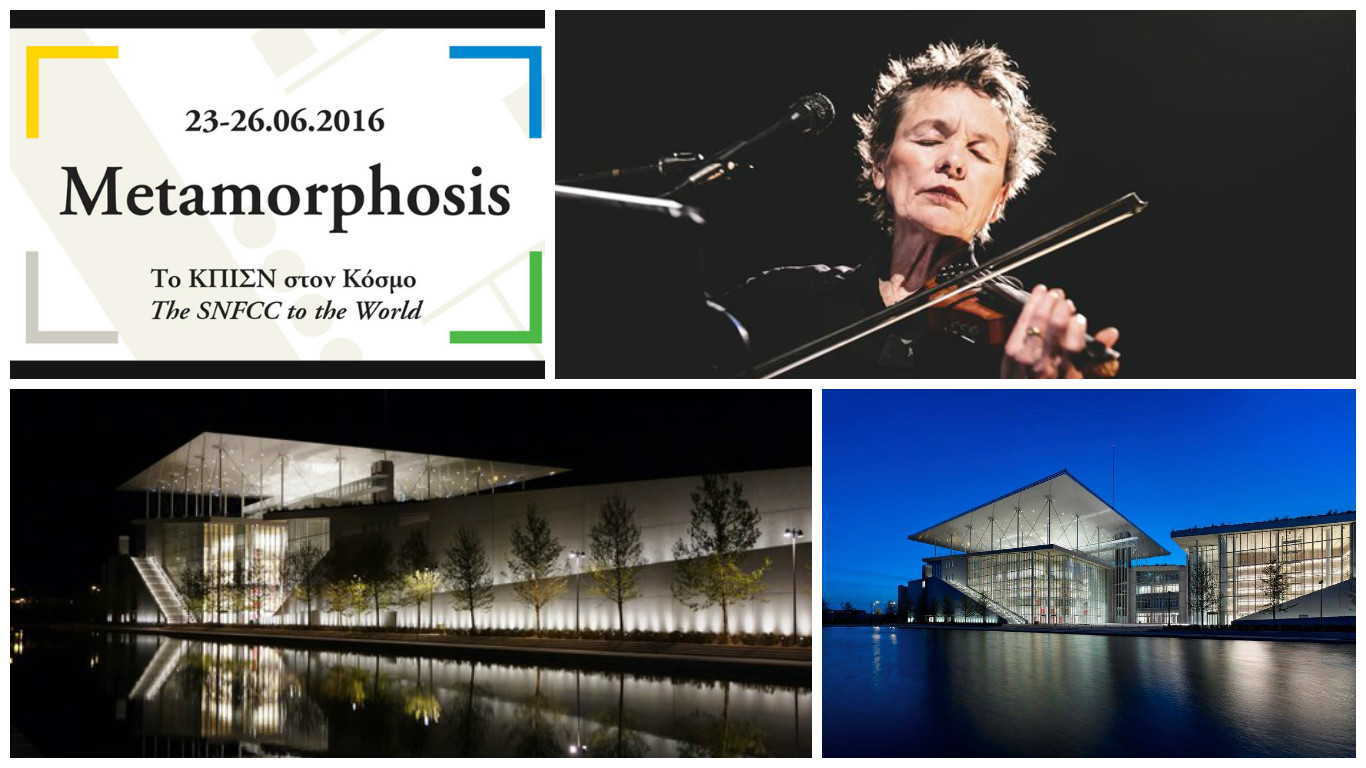
In Thiva, there is the reenactment of the “Vlach’s Wedding” on Clean Monday. The spectacle is unique because of the colourful wedding parade and the accompanying traditional music (bag pipes and tabors). Last but not least, the Carnival of Galaxidi has become very popular due to the custom of “alevromoutzouromata” (literary a flour war), which takes place on Clean Monday. According to lore, the idea for the establishment of “alevromountzouromata” came from sailors who had traveled to Sicily and seen similar customs there.
- Carnival in the Dodecanese
On Clean Moday, the feast begins early in Karpathos, where the custom of the Immoral Acts Court takes place. All the men that are dressed like women accuse the rest of several incidents and engage in flippant, saucy banter, while “tzafiedes” (the policemen) arrest them and take them to court. In the end, no one is acquitted of the charges and everyone is sentenced to pay a fine, which they actually pay!
In Leros, the inhabitants revive the tradition of “kamouzeles”. Men covered with multicolored blankets, their faces blackened with charcoal and armed with spears, roam through the streets, while children dressed as monks recite poems from house to house.
TAGS: FESTIVALS

